【Zen Flower Arrangement】Zen Flower Making Process
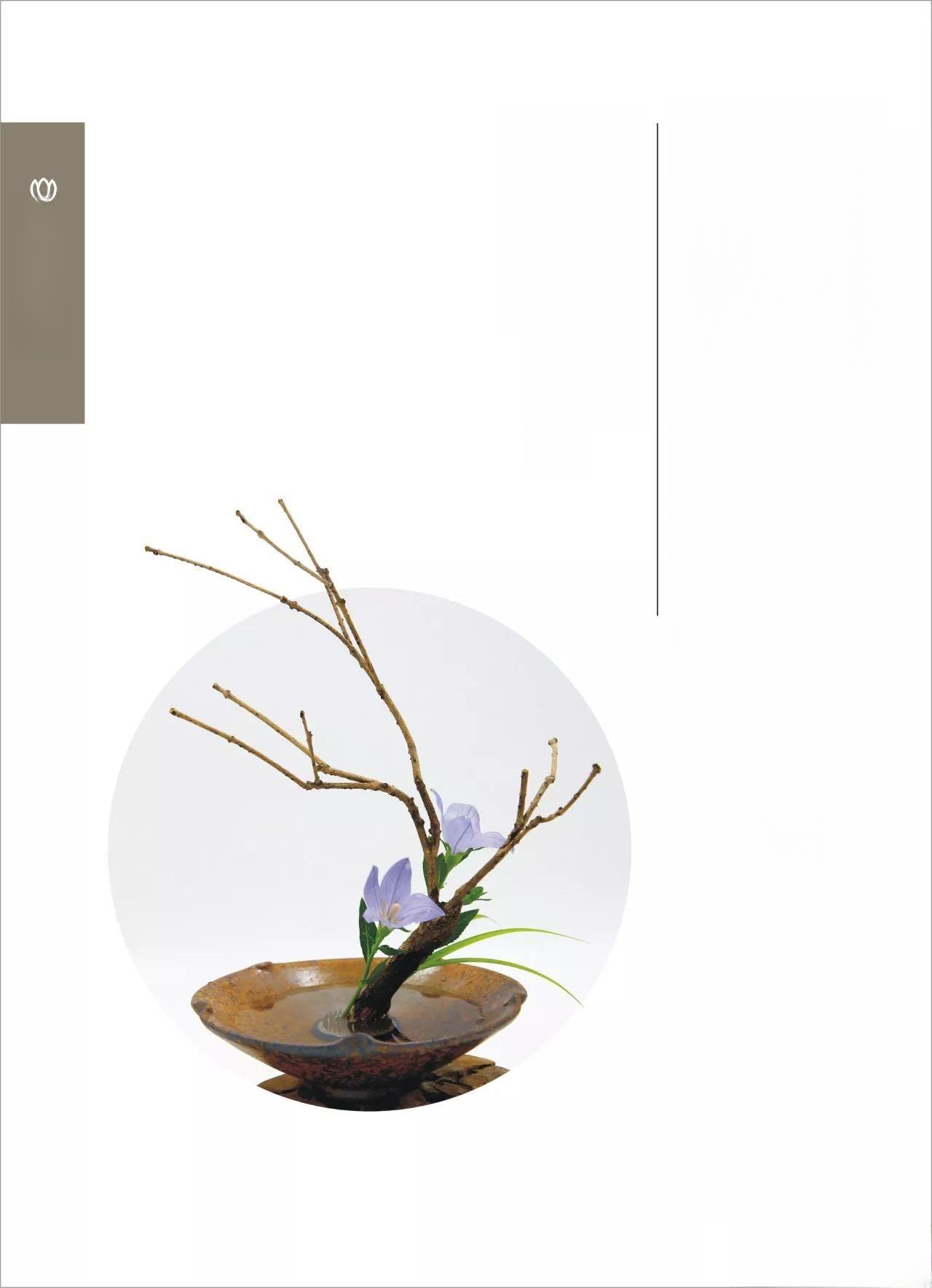

Zen Flower Production Process
1. Preparation before creation
(1) Keep calm and relaxed, in harmony with the scene. Making Zen flowers is a process of cultivating the mind and cultivating one's character. One must keep calm and relaxed, put aside worries and worldly affairs, and be as serious as practicing Zen, so as to express the Zen spirit from the heart. People who are new to Zen flowers do not need to pay attention to techniques like professional florists, but this does not mean that there are no techniques or no techniques in Zen flower arrangement. Nothing can be done without rules. At the beginning, some people do not pay much attention to techniques and are more casual when arranging, but casual does not mean casual. The word "casual" means that there is no scope, no restrictions on quality and number; the word "casual" carries a certain degree of one's own will. Some people have never arranged Zen flowers before and start from scratch. Although they arrange them casually, they have some plans, such as what shape to arrange, what flowers to use, and their own aesthetic standards, rather than being so casual that they are unprepared and do whatever they want.
Learning Zen flowers is an inevitable development process from making them for fun to paying attention to the rules to improve the artistic effect. Only by continuous learning and practice can we slowly understand the true meaning. The production environment is quiet, the mentality is leisurely, the purpose is clear, and the wholehearted dedication can make the work have a unique style.
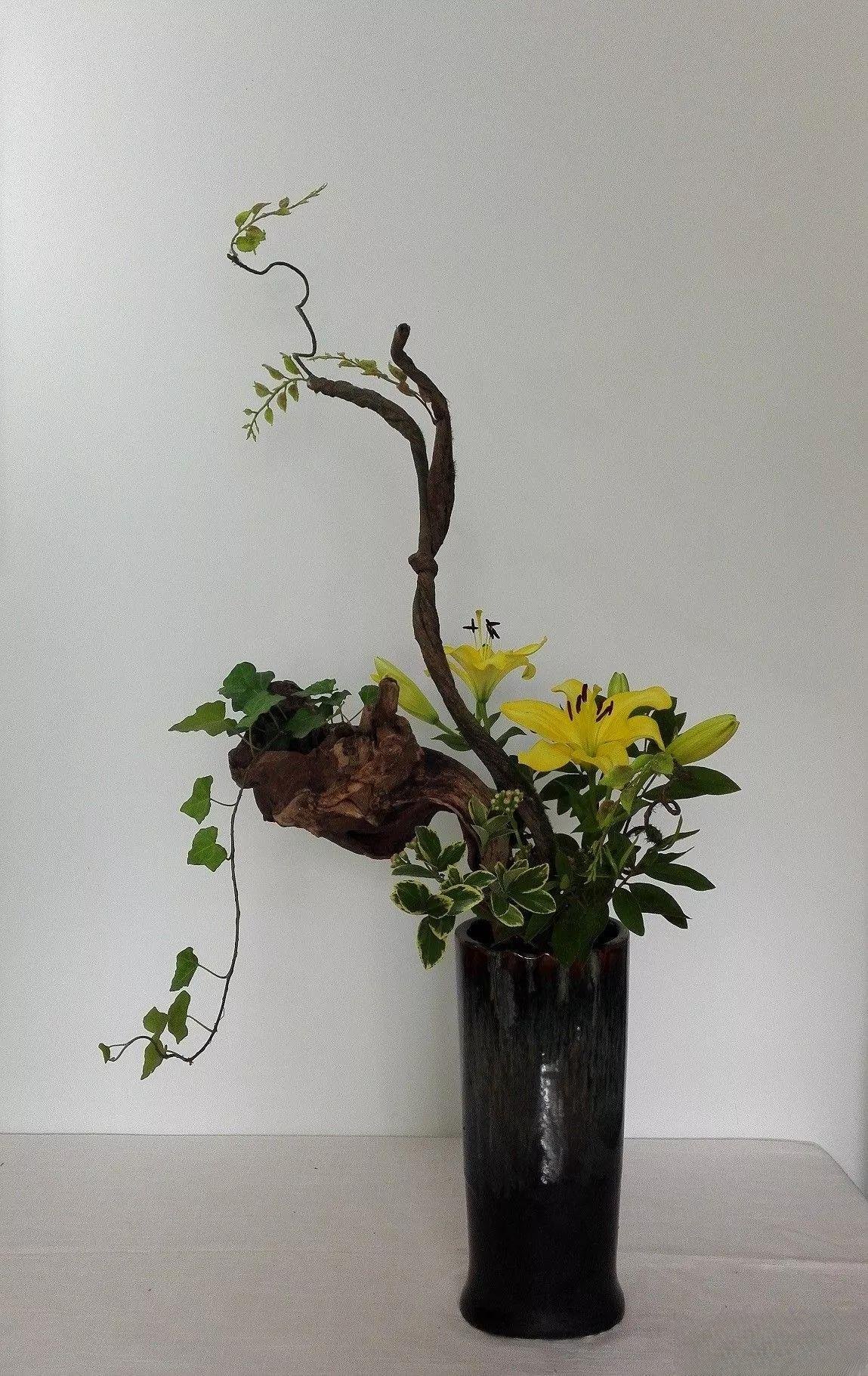
(2) Set the environment and clarify the purpose. When making Zen flowers, we must first clarify the environment and purpose of the flowers. Whether it is placed in a study, a room, a meditation room, or in front of the Buddha for offerings or decoration in a Buddhist hall. Different environments and different purposes will lead to different sizes, materials, and vessels. In Ming Gao Lian's "Three Theories on Flowers in a Vase", he said, "If you are arranging flowers in a study, the vase should be short and small, and the branches should be thin and delicate, not complicated"; "If you are arranging flowers in a hall, you can use a large official or brother-style vase with a straight mouth. When arranging flowers, you should choose large branches, or thin ones on the top and bottom, or high on the left and low on the right, or high on the right and low on the left." Flower arrangements in study rooms, rooms, and meditation rooms are mostly appreciated or entertained in a small area. They are generally small in size, representing personal character and appreciation requirements. There are only one or two kinds of flowers, small flower shapes, and small flower vases. There may even be only one flower, one leaf, or one branch. So-called one flower, one world, one leaf, one Tathagata. Just as Zhang Qiande said, "A little too much will make it redundant and boring." It can be seen that since ancient times, flower arrangement treatises have had their own requirements for the selection of materials and utensils for flower arrangement in different environments.
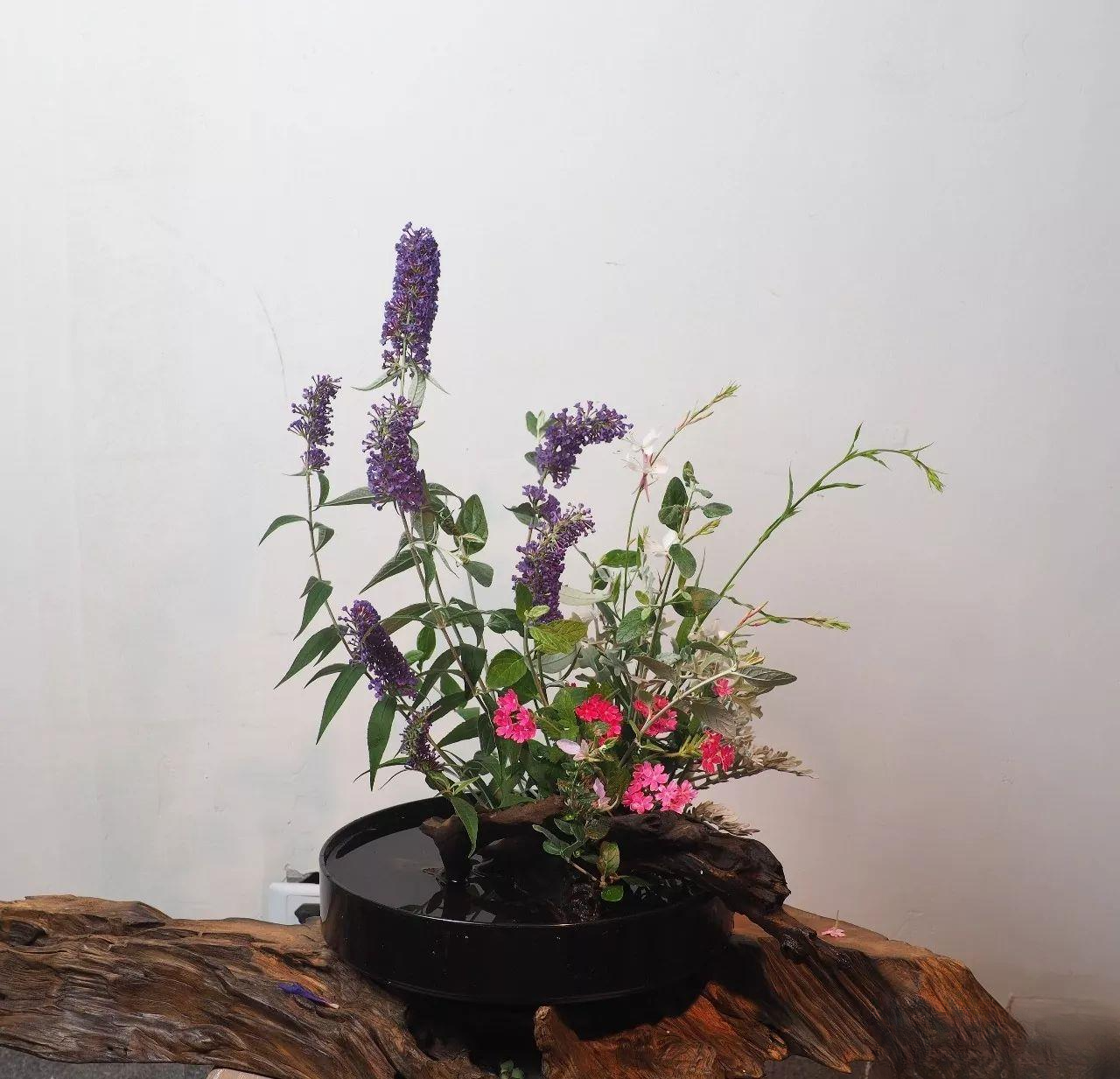
(3) Determine the plan and have a plan in mind. Flower arrangement is a creative process, and the idea must come before the pen. The flower vases and flowers are the initial material basis for the conception. The main trend, posture, and direction of the branches, the posture and balancing effect of the auxiliary branches, the combination of the main branches and the auxiliary branches... Understand all the factors and form a plan for the work. If you have a plan in mind, you will be able to do it easily when making it.
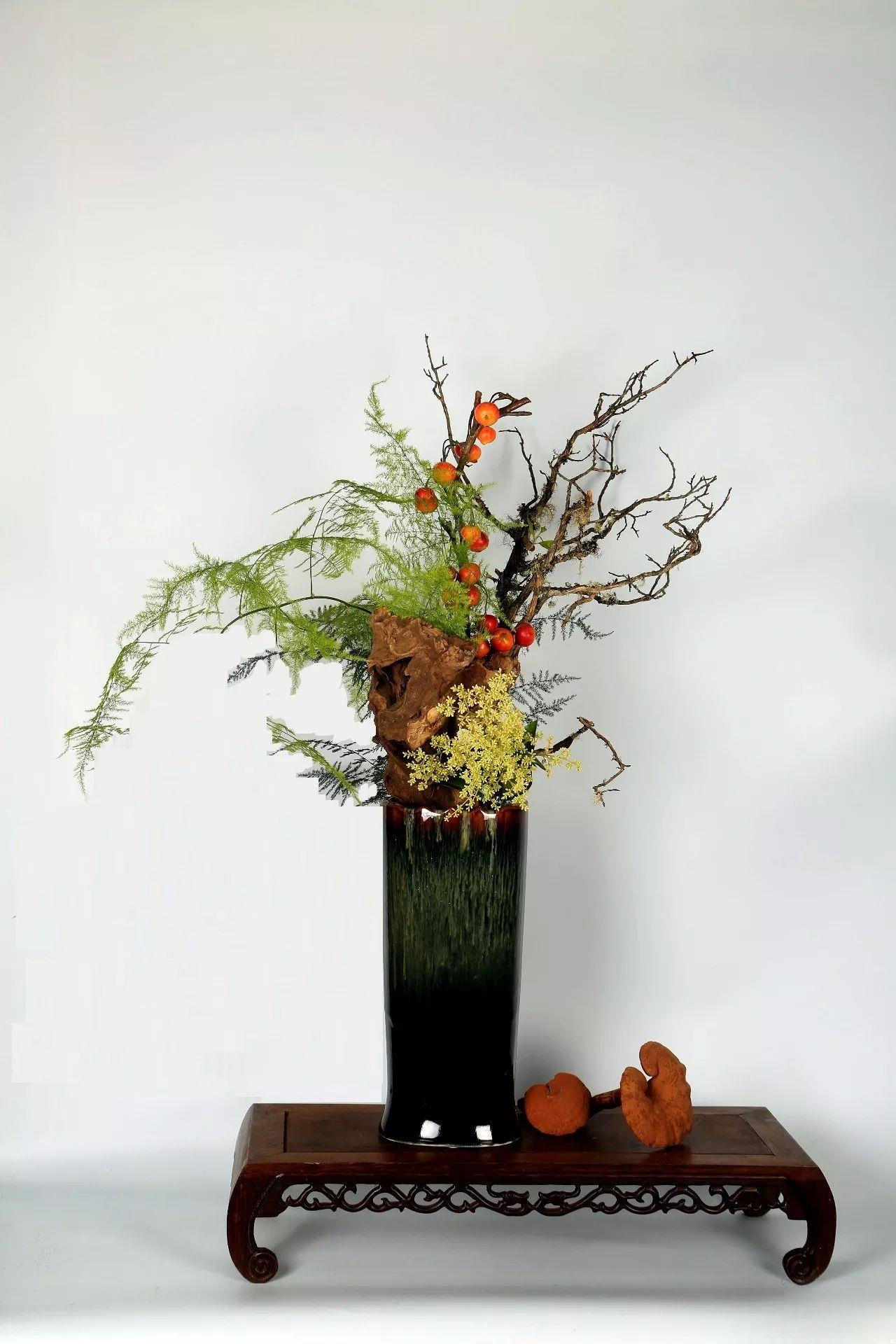
2. Production process of the work
(1) Choose a vessel. The size of the Zen flower vessel can be small enough to be held in the palm of your hand, or large enough to be placed in front of a Buddha or on the ground to decorate a hall or Zen room. There are many types, and the most commonly used ones are vases, basins, bowls, bowls, jars, and tripods. Choose different vessels according to different scenes and the size of the flowers, so that the flowers and the vessels are integrated, and the flowers are allowed to grow again in the flower vessel in a natural way.
When playing with Zen flowers by myself, the form of the vases used is not important. Some are hand-made pots that look like neither pots nor bowls, some are like old jars with broken shoulders, some are roughly made bowls and pots with irregular edges, or some are shaped like broken bottles, etc. These vases seem simple and crude, and are often discarded by modern flower arrangers, but they reveal a natural beauty that is so simple that it is almost primitive. They also have the ancient interest advocated by Zen masters and literati, who like to collect bottles, pots, jars, etc. from their ancestors, and use these ancient vessels to insert high-quality flowers, which is another style full of ancient interest.
The texture of Zen flower vessels is "copper tiles are expensive, gold and silver are cheap". Because gold-coated silver vessels are gorgeous in themselves and are ornamental decorations, if used to place Zen flowers, they will overshadow the beauty of the vessels and the flowers. Therefore, Zen flowers mostly choose simple vessels, and the effect is better when paired with natural style shelves. However, bronze vessels, large porcelain bottles or gorgeous cloisonné vessels can be used during grand sacrificial activities. Flower vases are mostly long-necked bottles, short and fat bottles, or simple basins, bowls, bowls, baskets, etc., with simple shapes and upward openings. Small works can also be paired with wooden cushions or Zen-related ornaments to achieve a more overall beautiful effect.
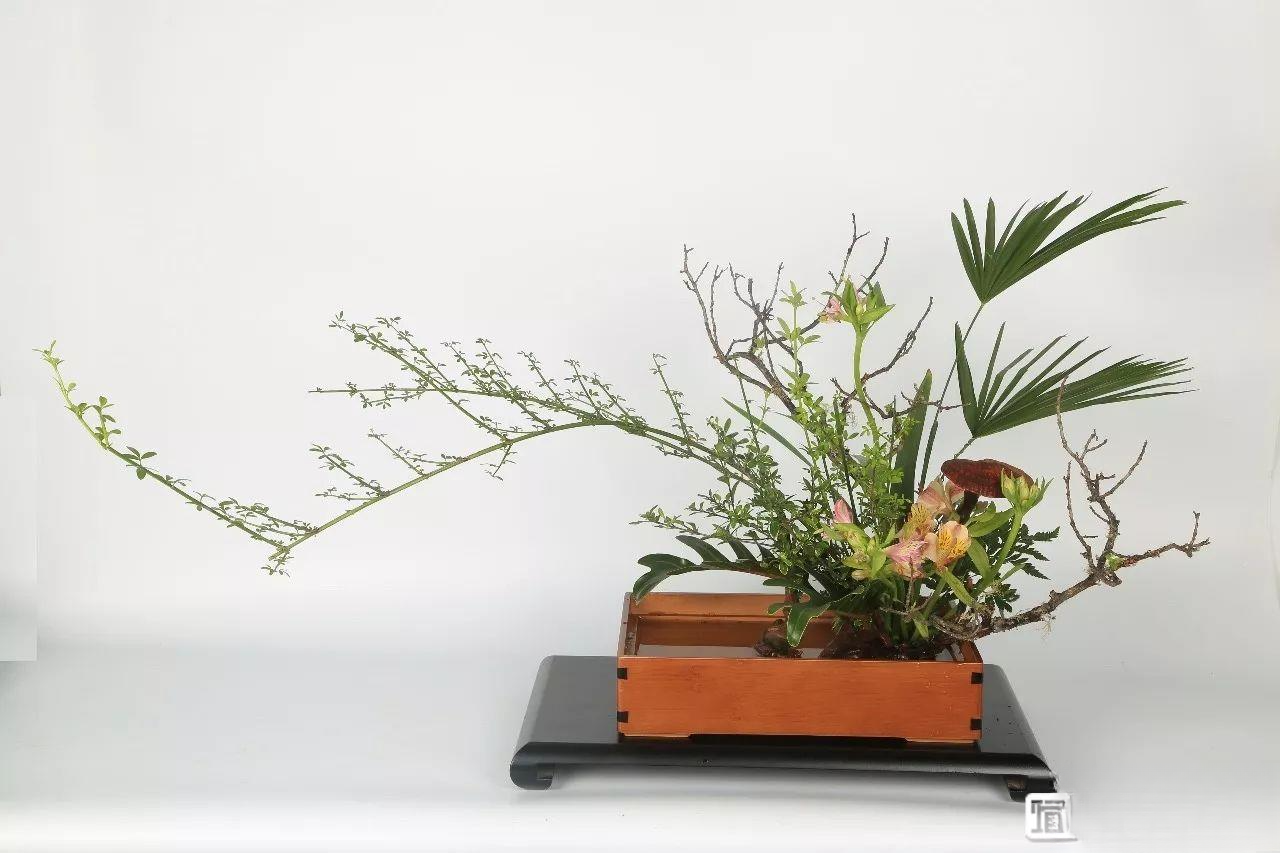
(2) Selecting flowers. Selecting materials is a very important step in making Zen flowers. The greatest beauty is simplicity. Although the materials used in the works are few, the requirements are very high. Each flower, leaf, and line must be natural and graceful. There are many plants in nature, and they grow in various shapes and forms. They cannot be used to make Zen flowers. The Song Dynasty's "Dongtian Qinglu" said: "The fragrance is clear and the color is not bright, so it is wonderful. If it is too bright red or too bright purple, it is not suitable." It can be seen that ancient literati Zen masters had their own standards for choosing flowers and were very careful.
The principle of selecting materials for Zen flowers is "more is worse than less", and less is better than more. Just as Li Qingjiang of the Qing Dynasty wrote in his poem "There are thousands of flowers in sight, but only two or three are pleasing to the eye", and Feng Zizhen of the Yuan Dynasty wrote in "Hundred Poems on Plum Blossoms" "Three or two are the most suitable for elegance, and good flowers and clear shadows do not need too many". The poems of literati give people a sense of enlightenment. There are so many flowers in nature, but only two or three are pleasing to the eye, which shows how picky they are. Good materials can make good flowers, and every branch and leaf of a good work is magical, which cannot be added or subtracted. It seems to be natural, like casting, ready to come out, and superb.
The selection of suitable materials must be combined with the composition requirements of the work, and we must patiently search for them. We must both respect natural beauty and enhance natural beauty in the flower body, which is the artistic effect we pay attention to in our creation. Sometimes the materials are not ideal, and they can be trimmed and processed to meet the requirements of the conception.
Choosing the right flower material requires a process of getting familiar with the plant material. Whether it is grown at home or purchased in the market, you need to observe carefully and keep the shape of the flower in mind. For example, when choosing the same flower material, you should choose flowers with different degrees of opening, that is, fully open, half-open and buds. Woody branches should be sparse, eccentric, twisted and natural; herbaceous materials should be upright and elegant. Some branches do not grow well. After picking them, you need to look at them more and think about how to trim them before you can use them. You must not cut first and think later, which will waste the materials. Only by being attentive and observing carefully and accumulating continuously can you choose good flower materials.
It is of course good to be able to buy suitable materials on the market, but we cannot ignore those inconspicuous plant materials in mountain villages. As long as they can express artistic conception, they are good materials, especially when used on Zen flowers, they will have unexpected effects. Not only can they express the artistic conception just right, but also make the work very colorful. Therefore, how to select materials is particularly important for the production of Zen flowers.
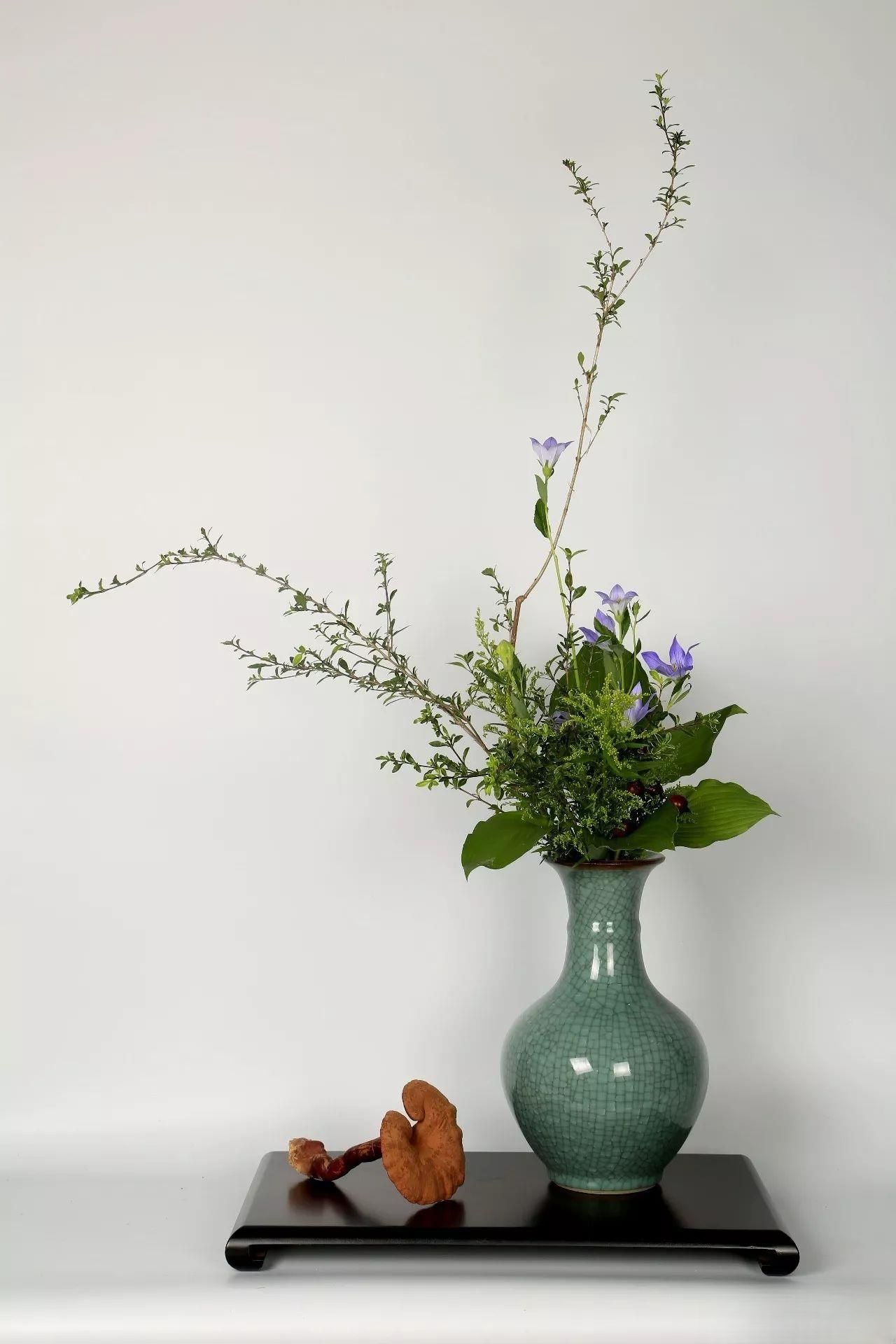
(3) Pruning. Some branches are not satisfactory despite careful selection, with lush branches and leaves but no sense of lines. In this case, the "rough" plants need to be pruned. First, carefully observe and determine what kind of shape the main trend of the branches in your hand is suitable for, whether it is upright or tilted, lying flat or drooping, and then prune it so that the pruned flowers meet the needs of the composition. The pruning process is just as described in "Six Records of a Floating Life": "You must first hold it in your hand, tilt it horizontally to observe its momentum, turn it over to see its posture, and after determining it, cut off the miscellaneous branches, preferably sparse, thin and strange." In other words, remove the redundant, take the essence, and leave the beauty that conforms to the creativity and presents the natural growth posture.
For example, some branches have forks on the original trunk of the mother plant, and there are forks on the forks. When pruning such branches, you should carefully consider the shape you want. If you want to insert an upright shape, the branches should be pruned toward the upright shape, with the leaves facing the sight, and the excess should be removed, so that the branches tend to be upright while maintaining the natural growth state. This kind of multi-branched branch has many forks and can be pruned into several bends to take its tilted trend. It is suitable for the composition of tilted shapes. When pruning, you should lean towards the requirements of the tilted shape. While paying attention to the leaves facing the sun, see whether it is suitable for left or right tilt, and then prune.
Pruning branches requires experience, more observation, and careful subtraction. Don't be impatient, as haste makes waste. Before pruning, look at the main trend of the branches, the direction of the branches, and the density effect, and then remove duplicate branches, crossed branches, and parallel branches to achieve a suitable density and a flexible effect.
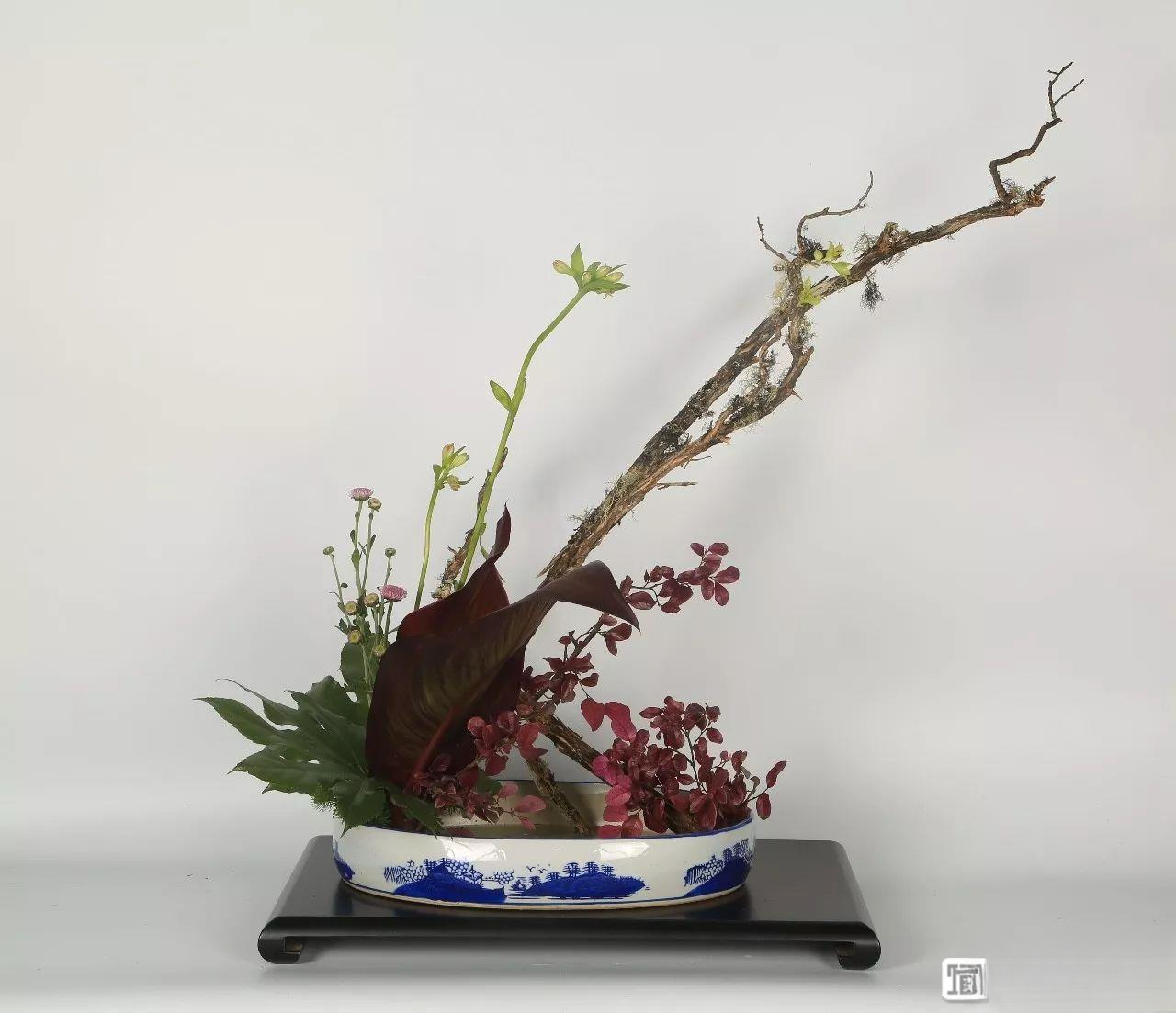
Steps for pruning branches:
1) Reasons and purposes for pruning
It is impossible for flower branches cut from nature to be completely satisfactory. Practice has proved that even if you carefully select them and think they are suitable for the composition requirements, they cannot be used immediately. Therefore, pruning branches is a compulsory course for Zen flower arrangement. Pruning branches is to create layers and postures, and to cut off excess branches and leaves, so that they can show vitality and meet the needs of shaping. It is easy to say, but it is not as simple as 3-1 = 2. If you prune well, the work will be very colorful, but if you prune badly, a branch may be completely useless. This requires understanding the skills and methods of pruning. Not only do you need to understand, but you also need to practice for a long time.
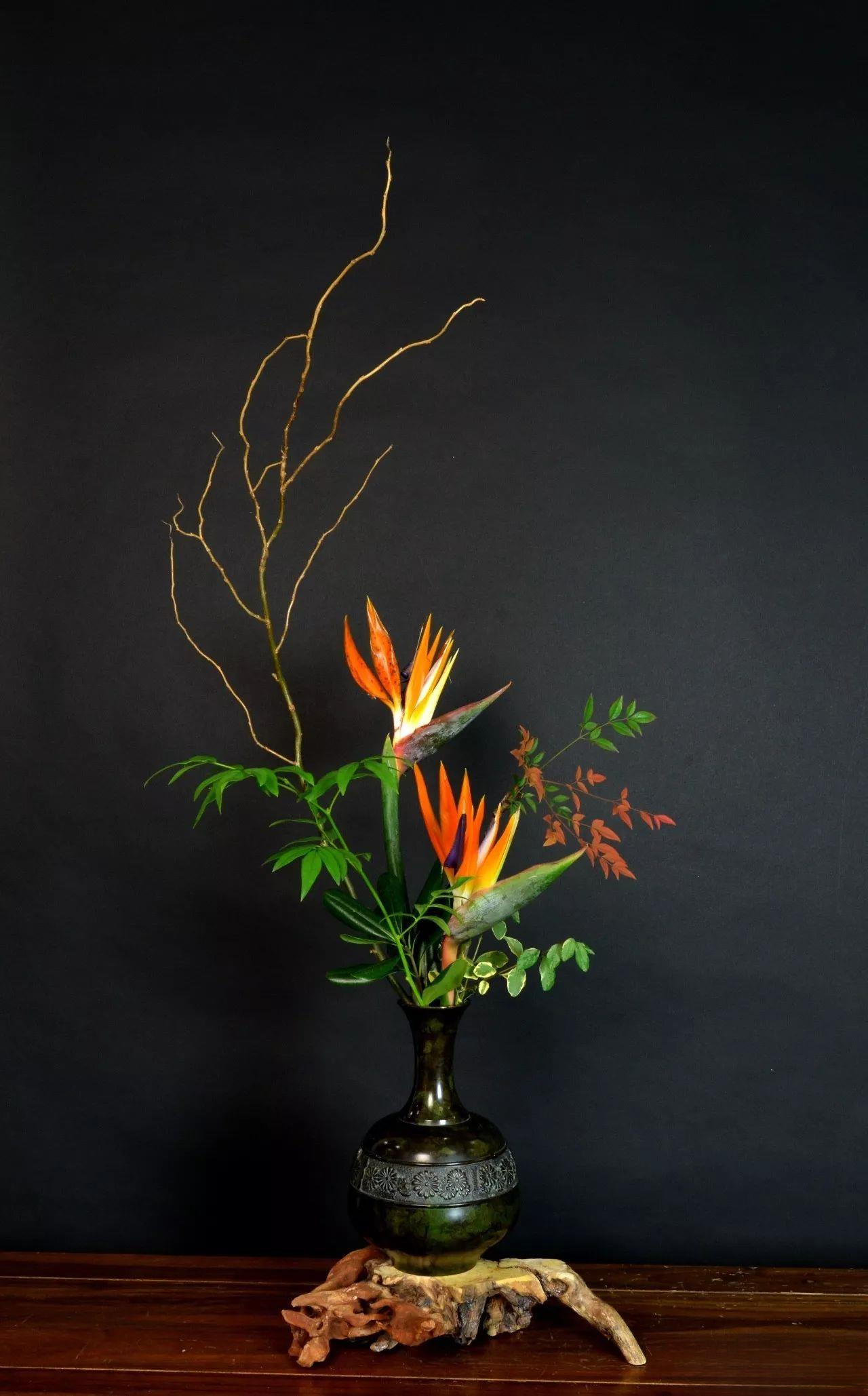
2) Pruning steps
Pruning branches is a gradual process of subtraction, which is usually not completed in one go. It is often divided into three stages, namely initial pruning before inserting, pruning again during the inserting process, and final fine-tuning based on the situation after the work is completed.
The first step is to prune before flower arrangement. Branches cut from nature are generally messy and lack ideal lines. They are not suitable for direct flower arrangement. You must hold them in your hands and observe their state carefully before considering how to cut them. The first pruning is very important. It is the first step to determine the main trend of the branches and the shape of the flower body. In this step of pruning, the main stem trend should be clearly seen. Branches, fruits, and leaves that can be cut or not should be temporarily retained and decided after inserting them into the flower vase.
The second step is pruning during the planting process. The flowers and the flower pot are a reasonable whole. After the branches pruned before planting are inserted into the flower pot, sometimes you will find that the forked parts of the branches, or the orientation of the fruits, leaves, and flowers are not ideal, and some adjustments need to be made. When observing that the overall effect of the flowers and the pot is the best, you can continue to do subtraction, cutting off the redundant branches in the details or the redundant branches, leaves, flowers, and fruits that block each other and affect the shape.
The third step is to prune again after the work is completed. As the flowers gradually increase, sometimes you will feel that the branches are very clear when there are no other flowers. After adding other flowers, some branches or leaves on the branches are in the way. Only after cutting them off can the various branches be in their proper places and look peaceful. At this time, pruning is fine-tuning, and the small branches and leaves that affect the overall effect are appropriately removed to make the work more perfect.
Here is an example:
Figure 4-8 Before trimming, no lines can be seen, only a mess.
Figure 4-9 After the first pruning, the direction of the main branches is clear.
Figure 4-10 After trimming, the bottom is very empty and the front extension is not enough.
Figure 4-11 After inserting the main flower, the branches appear very thick, and auxiliary branches are added to the flowers, making the composition of the work an obviously unequal triangle, which is not coordinated enough.
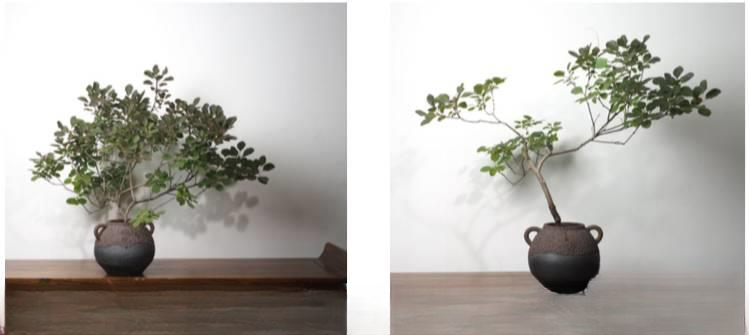
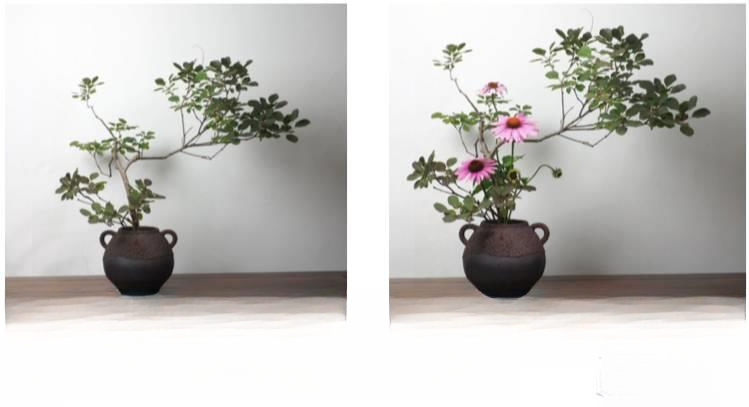
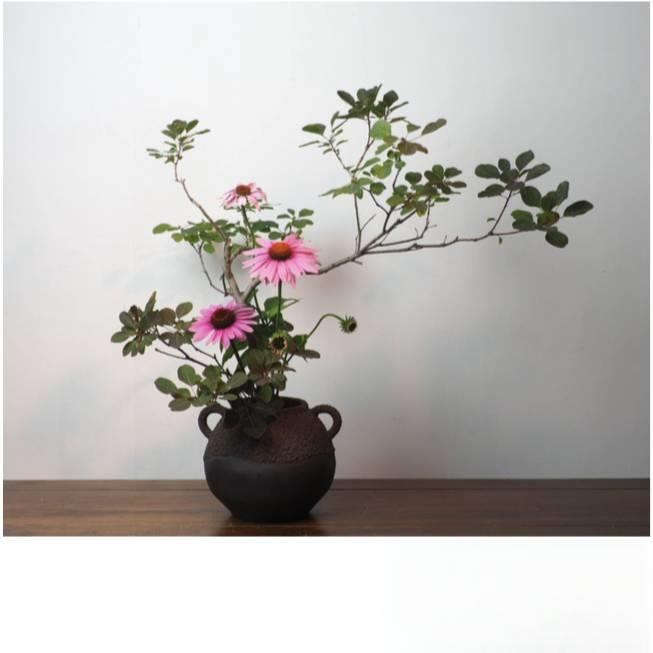
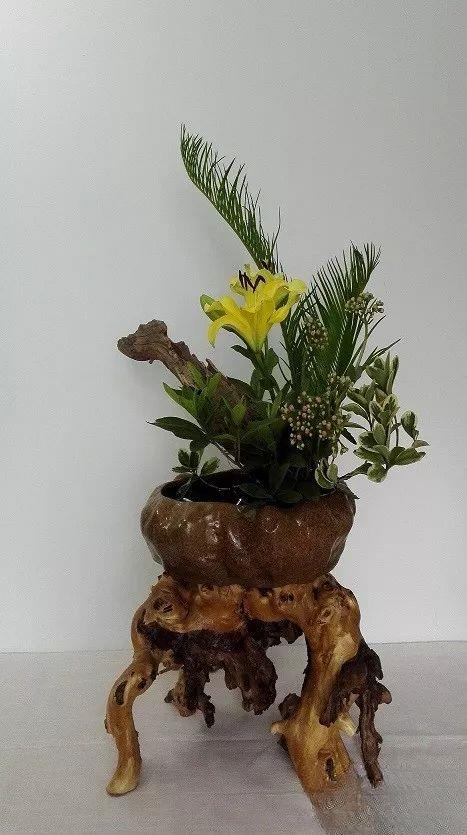
(4) Build a frame. Build a frame that is clear and natural, with appropriate proportions. It is lively inside and elegant outside. The Zen flower frame is a combination of branches, guest branches, and main branches, forming a three-dimensional shape with height, width, and depth. There are many Zen flower art forms. The direction of the branches in the flower body is divided to find its regularity, that is, four basic shapes. If the branches are upright, it is upright; if the branches are inclined, it is inclined; if the branches are horizontal, it is horizontal; if the branches are hanging, it is cliff-like.
When building a frame, you need to master the proportion relationship. Only when the proportion is appropriate can the composition be beautiful. Generally, the main branch is 1.5-2 times the height + width of the flower pot. If the branch is thin or light, it can be longer, otherwise it will make people feel weak. For example, for water plantain, red willow, snow willow, red yew, iris leaf, calamus leaf, etc., it should be more than 2 times. The guest branch is 2/3 or 1/2 of the main branch, and the main branch is about 1/3 of the main branch. In order to enrich the flower body, auxiliary branches can be added to the main, guest, and main branches, but they cannot exceed the length of the main, guest, and main branches. Adding auxiliary branches is generally suitable for decorative environment Zen flowers with relatively large flower bodies. Although these flower bodies also pay attention to clear structure, they should not look too monotonous or sparse. Whether to add auxiliary branches to small Zen flower works depends on the growth of the plants and the needs of the shape.
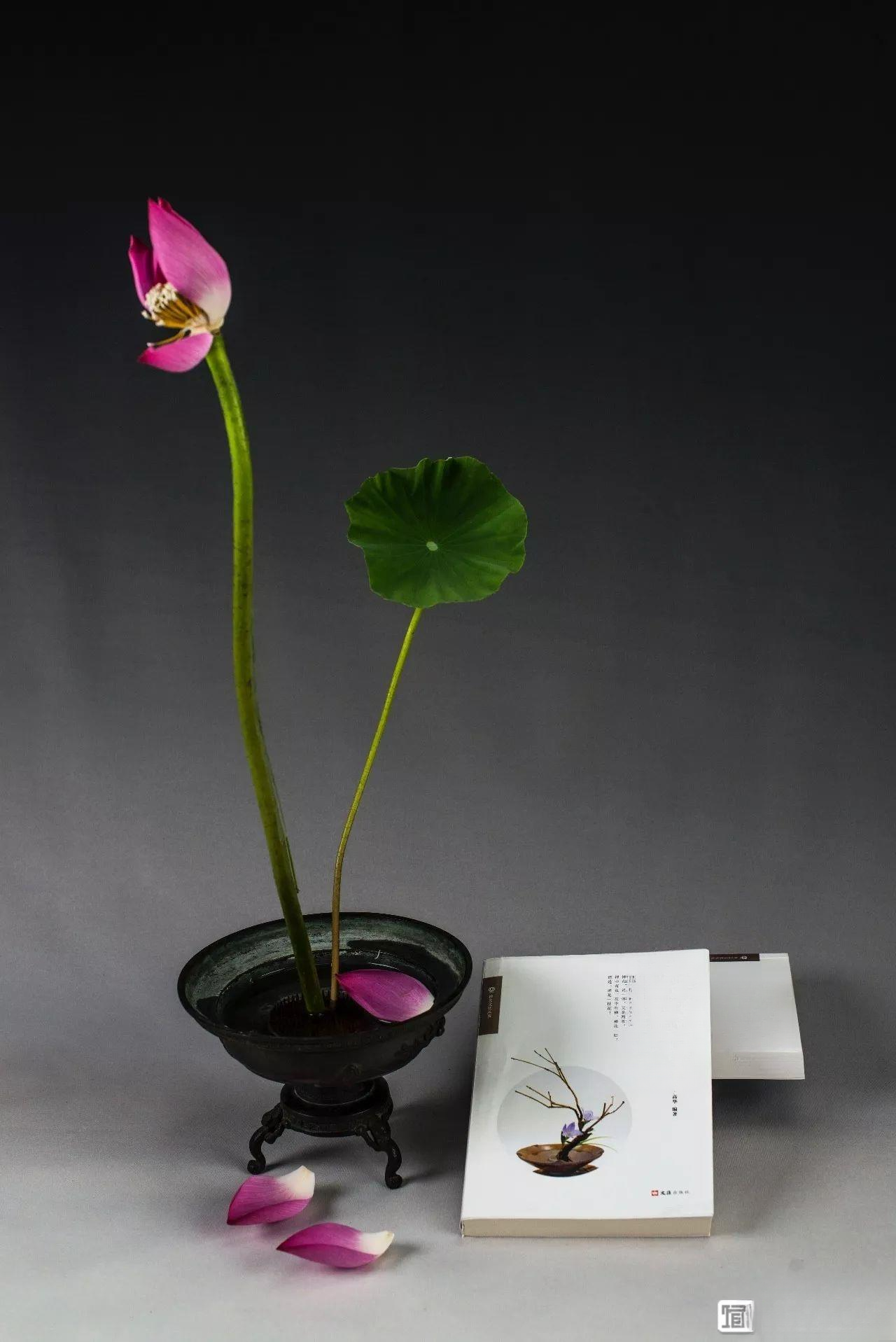
The above content is excerpted from the fourth chapter of "Zen Art Flower Arrangement", the first monograph on Zen flowers, edited by Liu Minghua and Gao Hua. The book has more than 300 pages and more than 200 illustrations. It has important self-study and collection value and is a must-have reference book for those who love Zen flowers. Readers who need to buy can order from the Zen Art Club (add WeChat ID: zenartclub), pay with WeChat, and express delivery to your door. For wholesale, group purchase, and institutions using it as teaching materials, pleasecontact Mr. He at 13917878218.
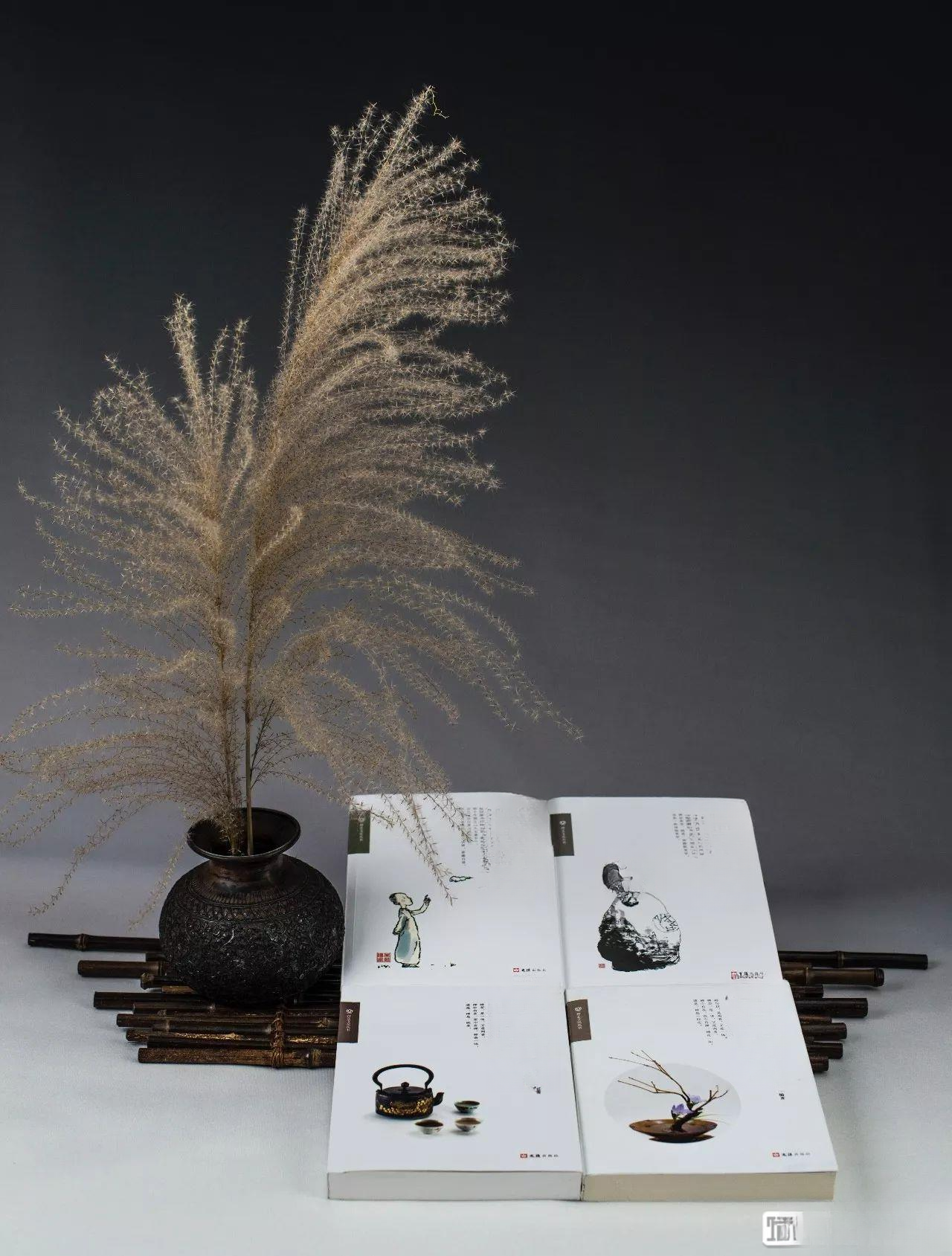
The Zen Art and Culture Series has published four books:
Price of "Zen Art Flower Arrangement": 78 yuan (full color printing)
"Zen Art Tea Ceremony" Price: 48 yuan
Price of "Zen Art Inscription": 48 yuan
Price of "Zen Art Spring and Autumn": 48 yuan
**For two or more signed books by the author, please buy at the list price**, free postage; for two or more books not signed by the author, 20% off, free postage.
Quick payment, express delivery to your door, read it first!